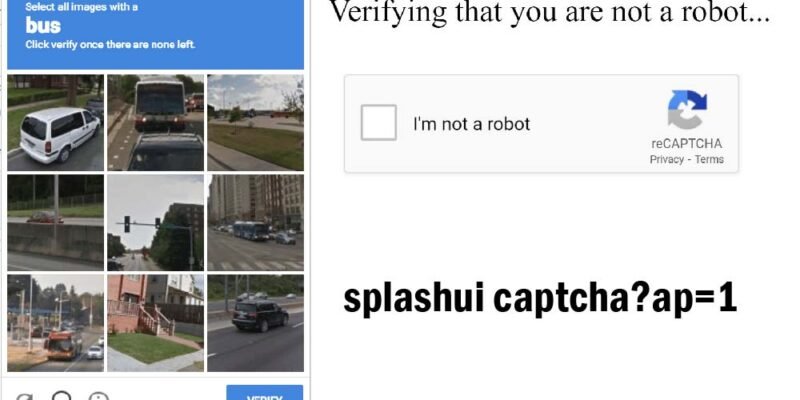In the digital age, ensuring robust website security is not just necessary; it’s imperative. Traditional security measures often intrude on user experience or fall short in accessibility. SplashUI CAPTCHA?ap=1 emerges as a revolutionary solution, blending enhanced security with a user-friendly interface. This guide delves into the comprehensive steps necessary for implementing SplashUI CAPTCHA?ap=1, ensuring your website balances stringent security needs with optimal user experience.
Understanding SplashUI CAPTCHA?ap=1
SplashUI CAPTCHA?ap=1 represents a significant evolution from traditional CAPTCHA systems, which often rely on distorted text or image recognition that frustrates users. Instead, SplashUI CAPTCHA?ap=1 introduces interactive challenges that are accessible and engaging for all users, including those with disabilities. This enhances security by effectively distinguishing between human users and bots and improves site accessibility and user satisfaction.
Preparation for Implementation
Before integrating SplashUI CAPTCHA?ap=1, it’s essential to understand the technical requirements. The system is compatible with various web platforms, including popular content management systems like WordPress and Joomla. Preparation involves ensuring that your server can handle the CAPTCHA’s processing demands and that your website’s backend is compatible with SplashUI’s API.
Step-by-Step Implementation Process
Step 1: Registering for API Access
The first step is to obtain the necessary API keys from SplashUI, allowing your website to interact with their CAPTCHA system. This process involves registering on the SplashUI website, providing basic information about your website, and receiving your unique API keys.
Step 2: Installing the CAPTCHA Module
Depending on your website’s platform, the installation process will vary:
- For CMS like WordPress, SplashUI typically offers a plugin that can be installed directly from the dashboard.
- For custom websites: You might need to manually integrate the CAPTCHA using the provided API keys and follow the detailed documentation provided by SplashUI for specific implementation guidelines.
Step 3: Customizing the CAPTCHA
Customization is crucial for maintaining your website’s aesthetic and functional harmony. SplashUI allows you to customize the look and feel of the CAPTCHA, including themes, colors, and fonts, to align with your brand identity. Moreover, you can set the difficulty level and type of challenges based on your security needs.
Step 4: Integrating CAPTCHA into User Flow
Integrate the CAPTCHA at critical interaction points such as login forms, registration pages, and high-traffic transaction areas. This step is vital to enhance security without disrupting the user experience. SplashUI CAPTCHA can operate invisibly, analyzing user behavior to detect bots without presenting a visible challenge unless suspicious activity is detected.
Testing and Optimization
After integration, thorough testing across different devices and browsers is essential to ensure the CAPTCHA works seamlessly for all users. Analyze user interactions through backend analytics to assess the impact on user experience and adjust settings if necessary. Optimization might involve tweaking the difficulty of challenges or altering the integration points based on user feedback and behavior patterns.
Monitoring and Updating
Continuous monitoring of the CAPTCHA’s effectiveness against new and evolving threats is crucial. Stay updated with SplashUI’s latest security features and implement updates promptly. Regular updates improve security and refine user interactions based on the newest user behavior trends and feedback.
Troubleshooting Common Issues
Issues such as user lockouts or CAPTCHA failures might occur despite careful implementation. SplashUI provides extensive support and documentation to help troubleshoot common issues. Establishing direct support with SplashUI can ensure quick resolutions to any operational problems.
Conclusion
Implementing SplashUI CAPTCHA?ap=1 is a strategic move towards fortifying your website’s defenses while enhancing the user experience. By following these steps, website owners can protect their domains from bots and automated threats and provide a more accessible and enjoyable experience for genuine users. In the ever-evolving cybersecurity landscape, staying ahead means choosing practical, user-friendly, and adaptable solutions to various user needs.
If you diligently apply this guide, your website will be well-equipped to handle security challenges without compromising the quality of user interactions. Embrace SplashUI CAPTCHA?ap=1 and step into a new era of digital security where user experience and accessibility are not afterthoughts but priorities.
Do Read: A Guide to Smart Square HMH (Hackensack Meridian Health)













